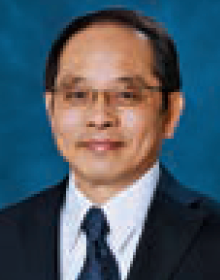Reflections from Pittcon 2023: Megatrends of HPLC and MS Instruments and Applications
This article marks my 10th anniversary as a columnist for LCGC North America’s “Perspectives in Modern HPLC,” a magazine column published four times yearly. I recall my first column contribution was after Pittcon 2013 in Philadelphia. Now 10 years (and 42 articles) later, I revisited Philadelphia on March 19–22, 2023, the first in-person Pittcon after a two-year hiatus because of the pandemic.
Much has changed in the last few decades as we witnessed a decline in Pittcon’s preeminence from a pre-internet peak of 20,000+ attendees. Post-pandemic travel restrictions, high inflation, and economic downturns further accentuated the uncertainties of Pittcon’s future. Nevertheless, I sensed an upbeat mood at Pittcon 2023, as the conferees were happy to be back. The attendance rebounded from Pittcon Chicago 2020 to ~9,000 registrants (estimated). I counted 450+ exhibitors at the 3-day exposition, and observed busy floor traffic on the first two days, despite the absence of major manufacturers, such as Agilent, Thermo Fisher Scientific, and Sciex.
Megatrends of HPLC and MS instruments and Applications
Let us start with a general discussion of the megatrends of separation science equipment (both high performance liquid chromatography [HPLC] and mass spectrometry [MS]) and their applications in recent years.
The four major manufacturers of HPLC equipment (Agilent, Shimadzu, Thermo Fisher Scientific, and Waters) continued to dominate the instrumental market with a total of approximately 85% of the HPLC market share reported in 2018 (1,2). The migration of HPLC to ultrahigh-pressure liquid chromatography (UHPLC) was essentially complete as manufacturers continued to expand their HPLC product lines by increasing offerings in terms of pressure ratings (three categories: UHPLC (>15.000 psi), intermediary-pressure (9,000–12,000 psi), and HPLC (<6000 psi)), sample scales (analytical, semi-preparative, preparative, micro/nano LC), additional system capabilities (dual-path, bio-inert, 2D-LC), and application-specific analytical systems (analysis of cannabis, amino acids, biopharmaceutical quality control, and clinical diagnostics) (2,3).
For mass spectrometers, the equipment market is dominated by the big four HPLC manufacturers in addition to Sciex (Danaher) and Bruker. There is a definitive trend towards more compact MS single-quadrupole (SQ) and triple-quadrupole (TQ) MS coupled to CDS, high-resolution MS, such as time-of-flight (TOF) or hybrids (Q-TOF), and ion mobility MS (IMS) for resolving isobaric compounds. Applications of LC–MS continue to push the frontiers in bioscience research (in proteomics, metabolomics, lipidomics, glycomics, and the discovery of disease biomarkers), biopharmaceutical developments (new drug modalities, antibody-drug conjugates, mRNA vaccines, oligonucleotides, virus, and lipid nanoparticles for gene delivery), and clinical diagnostics and imaging (4,5).
Conclusion
I have attended Pittcons for four decades, and Pittcon 2023 remained a rewarding and inspiring experience (6). I want to appeal to not only HPLC and MS instrument manufacturers, but all of them. I would encourage all instrument manufacturers to reconsider a return to the most prominent American laboratory conference for the benefit of laboratory scientists and consumers. I am hopeful that the Pittcon organizing committee, which did a stellar job in the past 70+ years, will continue to deliver a global conference of increased relevance to the analytical science community and instrument manufacturers alike.
References
(1) Guillarme D.; Dong M. W. (Eds). UHPLC: Where We Are Ten Years After Its Commercial Introduction. Trends in Anal. Chem. 2014, 63, 1–188.
(2) Dong, M.W. HPLC and UHPLC for Practicing Scientists, 2nd ed.; Wiley, 2019, pp. xxiii-xxiv, 81–116.
(3) Dong, M. W. New HPLC Systems and Related Products: A Brief Review. LCGC North Am. 2022, 39 (4), 172–178. DOI: 10.56530/lcgc.na.jw6767l7
(4) McCullagh J.; Oldham, N. Mass Spectrometry; Oxford University Press, 2019.
(5) Shi, J.; Chen, X.; Diao, J. et al. Bioanalysis in the Age of New Drug Modalities. AAPS J. 2021, 23 (3), 64. DOI: 10.1208/s12248-021-00594-w.
(6) Dong, M. W. “My Forty Years at Pittcon.” LinkedIn article, March 2, 2023, https://www.linkedin.com/pulse/my-40-years-pittcon-michael-dong-%25E5%2594%2590%25E7%25BA %25AC%25E4%25B8%25AD/?trackingI d=is6JmjqehmlCfyZGI4wUxg%3D%3D
ABOUT THE AUTHOR
Michael W. Dong is a principal of MWD Consulting, which provides training and consulting services in HPLC and UHPLC, method improvement, pharmaceutical analysis, and drug quality. He was formerly a Senior Scientist at Genentech, a Research Fellow at Purdue Pharma, and a Senior Staff Scientist at Applied Biosystems/PerkinElmer. He holds a PhD in Analytical Chemistry from City University of New York. He has more than 130 publications and a best-selling book in chromatography. He is an editorial advisory board member of LCGC North America and the Chinese American Chromatography Association. Direct correspondence to: LCGCedit@mmhgroup.com.

Polysorbate Quantification and Degradation Analysis via LC and Charged Aerosol Detection
April 9th 2025Scientists from ThermoFisher Scientific published a review article in the Journal of Chromatography A that provided an overview of HPLC analysis using charged aerosol detection can help with polysorbate quantification.
Removing Double-Stranded RNA Impurities Using Chromatography
April 8th 2025Researchers from Agency for Science, Technology and Research in Singapore recently published a review article exploring how chromatography can be used to remove double-stranded RNA impurities during mRNA therapeutics production.






